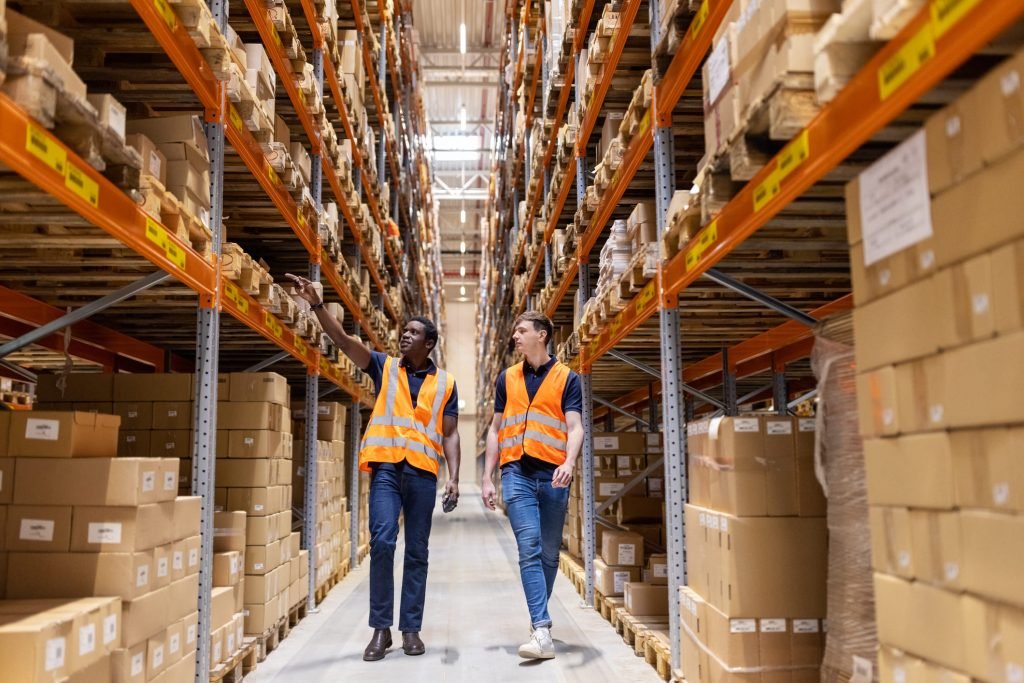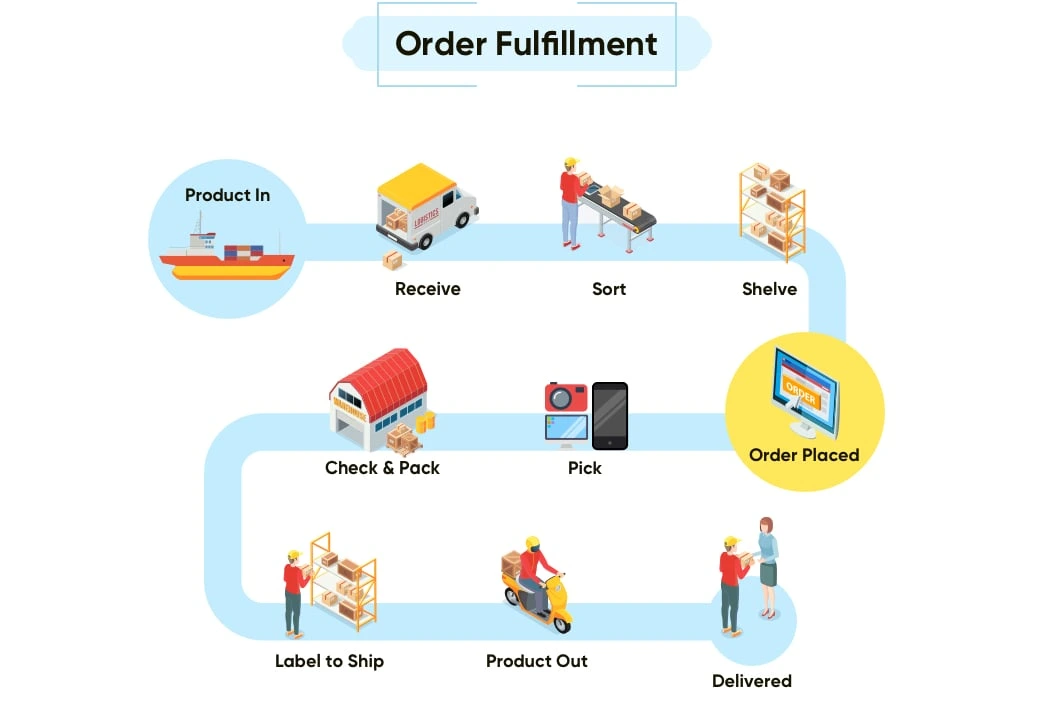In today’s fast-moving eCommerce world, speed and accuracy are everything. That’s where a fulfilment service centre steps in. For businesses across the UK, these centres are the unsung heroes working behind the scenes to ensure customer orders arrive quickly and correctly.
From handling inventory to packing and shipping orders, a fulfilment centre helps businesses streamline operations while focusing on growth. Whether you’re a small online shop in Manchester or a scaling brand in London, using a fulfilment service centre could transform your entire logistics setup.
What Is a Fulfilment Service Centre?
A fulfilment service centre is a third-party logistics hub that stores your products, processes orders, packs them securely, and ships them to your customers. Think of it as your outsourced warehouse and delivery team rolled into one.
These centres serve a vital role in eCommerce by reducing overheads, speeding up delivery, and improving customer satisfaction especially when you’re targeting a national or international audience.
Key Roles of a Fulfilment Centre
Fulfilment centres handle:
-
Storage of inventory in organised, secure facilities
-
Order picking and packing using barcode systems and quality controls
-
Shipping via national and global courier networks
-
Returns management to keep customers happy and loyal
Most centres also offer real-time stock updates through integrations with your website or sales platform, like Shopify or WooCommerce.
What Is a Package from Fulfilment Centre?
A package from a fulfilment centre is the final product your customer receives carefully picked, packed, and shipped by professionals.
Lifecycle of a Package
-
Customer places an order.
-
Fulfilment centre receives it instantly via software integration.
-
Staff pick the items from inventory shelves.
-
Goods are checked and packed safely.
-
Labels are printed and attached.
-
Courier picks up the parcel.
-
Package is delivered to the doorstep often within 1-2 days in the UK.

Tracking and Labelling in Fulfilment
Every package is tracked with a unique code, allowing customers to monitor deliveries in real-time. Barcodes, RFID tags, and automated systems ensure accuracy at every step minimising errors and delays.
Fulfilment Centre vs Amazon Fulfilment
The rise of Amazon’s Fulfilment by Amazon (FBA) has led many UK sellers to ask: is it better than traditional fulfilment centres?
What is Amazon Fulfilment (FBA)?
Amazon FBA allows sellers to send inventory to Amazon warehouses, where Amazon picks, packs, ships, and even handles customer service. It’s fast and highly integrated into the Amazon ecosystem perfect if you’re selling exclusively on Amazon.
Traditional Fulfilment Centres
Non-Amazon fulfilment centres are more flexible. They let you fulfil orders from multiple platforms Shopify, Etsy, eBay, your website without being tied to Amazon’s rules and fees.
Pros and Cons of Each
| Feature | Amazon FBA | Fulfilment Service Centre |
|---|---|---|
| Platform Exclusive | Yes (mostly Amazon) | No (multi-platform) |
| Brand Control | Limited | Full control |
| Cost | High storage & fees | Flexible pricing |
| Scalability | Fast scaling | Tailored growth |
| Support | Amazon-specific | Personalised |
What Are the 7 Steps of Order Fulfilment?
Understanding the order fulfilment process helps businesses ensure smooth delivery and happy customers.
Step 1 – Receiving Inventory
Products arrive at the fulfilment centre and are checked, scanned, and logged into the system.
Step 2 – Inventory Storage
Items are stored on shelves, bins, or pallets in a way that allows fast retrieval usually using barcode tracking.
Step 3 – Order Processing
As soon as an order comes in, the system kicks into action, allocating stock and alerting pickers.
Step 4 – Picking Items
Workers pick the correct items using digital pick-lists or handheld scanners.
Step 5 – Packing Orders
Products are packed with appropriate materials bubble wrap, boxes, void fill to prevent damage.
Step 6 – Shipping
Packages are weighed, labelled, and dispatched via courier networks like Royal Mail, DPD, or Hermes.
Step 7 – Returns Handling
If a customer returns a product, the centre processes it, checks quality, and either restocks or reports faults.

Benefits of Using a Fulfilment Service Centre in the UK
Fulfilment centres are increasingly popular among UK-based businesses, and for good reason. Whether you’re a start-up or an established eCommerce brand, the advantages are hard to ignore.
Cost Savings and Scalability
Hiring staff, renting warehouse space, and handling shipping logistics all add up. With a fulfilment centre:
-
You only pay for what you use no need for excess warehouse space.
-
Labour and shipping costs are included in bundled pricing.
-
As your business grows, the fulfilment centre scales with you effortlessly.
This is especially helpful during peak seasons like Christmas or Black Friday when order volume surges.
Focus on Core Business
By outsourcing fulfilment, you can focus on sales, marketing, and product development not packing boxes. It also reduces errors, ensuring consistent service for your customers.
How to Choose the Right Fulfilment Centre in the UK
Picking the right fulfilment partner is crucial. The wrong one can cost you time, money, and customer trust. Here are the key factors to consider:
Location and Speed
Choose a centre close to your customer base. UK-wide providers with locations in London, Birmingham, and Manchester can ship faster and reduce delivery costs.
Pricing Structure
Look for transparent pricing. Be wary of hidden fees for storage, returns, or account management. Some UK centres offer simple monthly packages for small businesses.
Tech Integration
The best fulfilment centres offer seamless integration with:
-
Shopify
-
WooCommerce
-
Amazon
-
eBay
-
Etsy
Look for real-time stock updates and automatic order syncing for hassle-free operations.
FAQs About Fulfilment Centres
What does a fulfilment centre do?
A fulfilment centre stores, picks, packs, ships, and manages returns for customer orders on behalf of online sellers.
Are fulfilment centres and warehouses the same?
Not exactly. A warehouse is just for storage, while a fulfilment centre handles the entire logistics process from order receipt to delivery.
Do fulfilment centres handle international shipping?
Yes. Many UK fulfilment centres offer global shipping, handling customs paperwork and international couriers to reach customers worldwide.
How fast are fulfilment centres in the UK?
Most centres offer next-day or 48-hour delivery within the UK. Speed depends on cut-off times and courier partnerships.
Can small businesses use fulfilment centres?
Absolutely! Many UK fulfilment providers cater specifically to small and medium enterprises (SMEs) with affordable packages and low minimums.
Is it better to use Amazon FBA or a UK fulfilment provider?
It depends on your needs. Amazon FBA is ideal for Amazon-only sellers, while UK fulfilment centres offer more control, multi-platform support, and brand flexibility.
Conclusion
The logistics landscape in the UK is evolving and fulfilment service centres are at the heart of that transformation. Whether you’re looking to reduce costs, improve delivery times, or focus more on growing your business, a fulfilment centre can be the smart solution.
Understanding the 7 steps of order fulfilment, knowing what a package from a fulfilment centre entails, and recognising the differences between Amazon FBA and traditional fulfilment centres can help you make the right choice for your brand.
So, if you’re ready to scale your eCommerce operations across the UK and beyond, it’s time to consider a fulfilment service centre that meets your needs.



